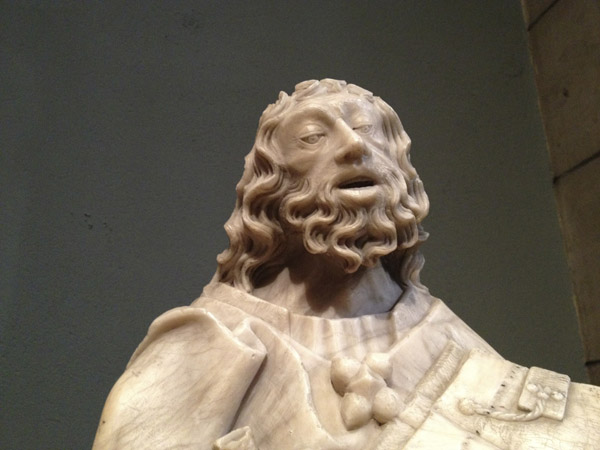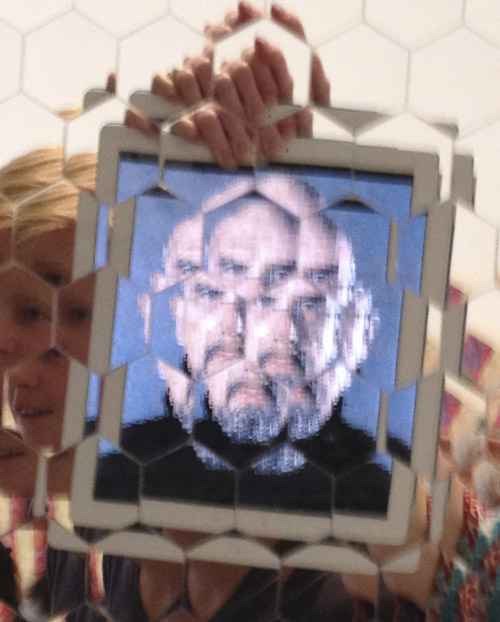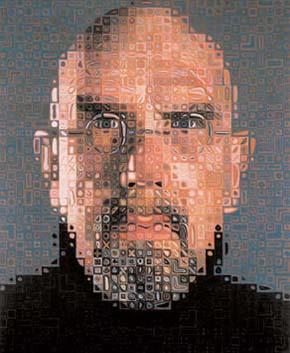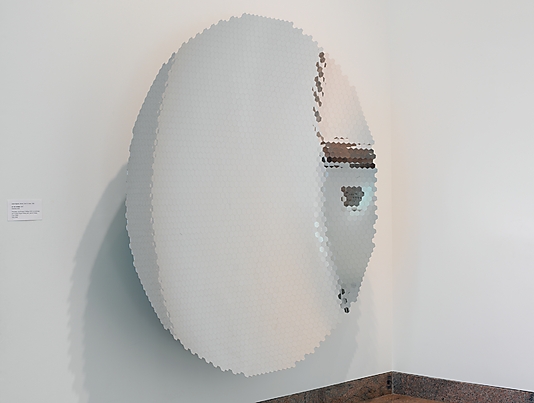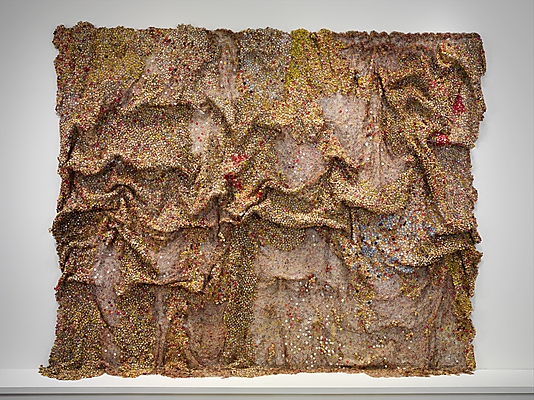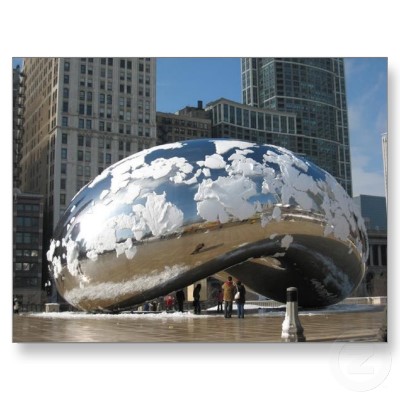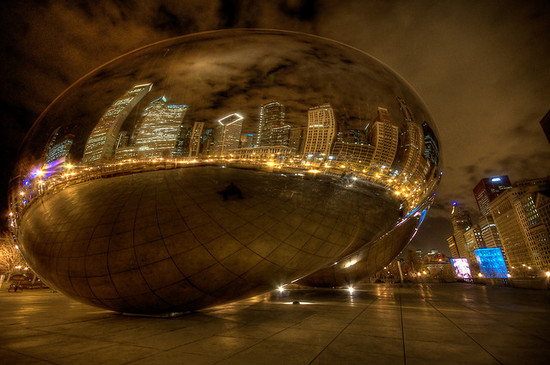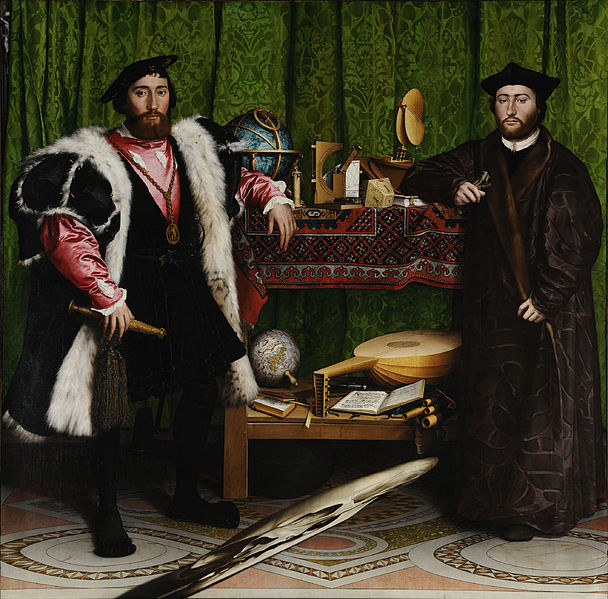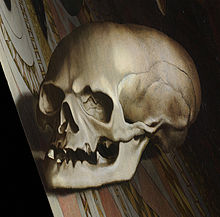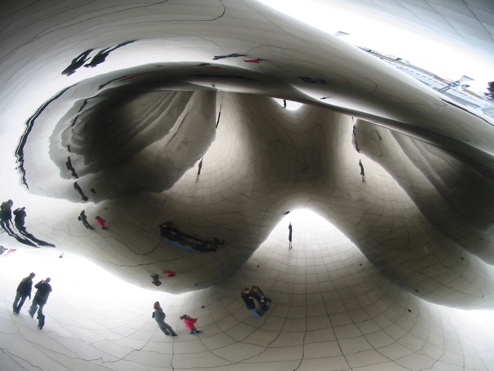Dear readers, my apologies for the lag between posts. I’ve seen a lot and learned a lot and will share it with you in the coming days — starting here in New York.
This is a photo of Chuck Close on my iPad, reflecting in Anish Kapoor’s Untitled, in the Metropolitan Museum of Art. My iPhone was the camera. Two of Chuck Close’s monumental portrait faces are downstairs at the Met, the newer one in his giddy grid technique.
This is a Chuck Close self-portrait (not on view at the Met). You see why I couldn’t resist.
Chuck Close self-portrait via Art 1103 Drawing Studio
Here is Anish Kapoor’s precision-made stainless steel piece Untitled. A large concave mirror of small octagons that had to be both engineered and and manufactured with high skill. As you move in relation to it you get a reverse-fly-eye view of your fragmented self. (I assume reverse since a fly’s eye is convex.)
Untitled by Anish Kapoor via the Metropolitan Museum of Art
When I saw the Kapoor in the Met’s Gallery 918 (a changing selection of contemporary works) the adjacent wall held a bedazzling hanging Dusasa II by Ghanaian artist El Anatsui. Astute curating, the intricate complexities of the fiber work broken and patterned by the mirror.
Except.
Except small lines formed so visitors could take photos of themselves, their families and their friends in the Kapoor mirror. They sought and saw themselves. I returned next day with Chuck Close on my iPad and also got in line. The mood was Exploratorium, not art. We crowded Kapoor’s octagons with us and we blocked sightlines to the mirror — and the hanging — from around the gallery space. Probably not the most profound experience of this artwork. But the work itself is a set-up for this.
Dusasa II by El Anatsui via the Metropolitan Museum of Art
Kapoor created Chicago’s Cloud Gate — aka the Bean. I find it beautiful — and countless conditions of weather and light have proved it so. To me this is a much more successful artwork. Scale, yes, but also because it is freestanding. Once the mirror’s on the wall its environment is constrained. And successful because the Bean’s surfaces are wonderfully complex curves, shifting in convexity and visually alive. Lock your vision on a feature in the distance — as you move, the object seems to stretch and retract elastically. An experience as smooth as the surface.
The Met piece is hampered by its geometric rigor, a one-trick pony. Once you get the trick your curiosity dissipates. Snap your pic and move on.
photo via Zazzle
photo by Christopher Coleman via DVICE
Mirrors are tricksy in art, they deflect attention from themselves as they reel your attention in like hooked fish. In the tradition of anamorphic art you need a mirror to decode an image hidden in plane view. As in the A you see below. As in the famous Holbein painting with its odd diagonal smear at the bottom, which you see decoded in the anamorphic translation underneath.
•
[image removed at the request of its author]
The Ambassadors by Hans Holbein the Younger via Wikipedia
decoded detail via Wikipedia
again, Cloud Gate photo via PhysicsWorld
Mirrors play with your mind.
To return to the Chuck Close paintings — when you see a Chuck Close portrait you confront a human, a distinct presence, a self. His painterly technique is spellbinding but it never trumps your palpable sense of confrontation with something lurking in yourself.
_ _______________________________________________
look further:
- • www.chuckclose.com Chuck Close
- • ANISH KAPOOR Anish Kapoor
- • The Metropolitan Museum of Art – Home
- • Exploratorium: the museum of science, art and human perception Looks like they’re about to move. I hope the magic stays with them. If you’re in San Francisco give yourself the treat. I love the Exploratorium and been changed by it.
- • Art 1103 Drawing Studio Found a trove of Chuck Close images here and it looked to be a useful site for art students.

